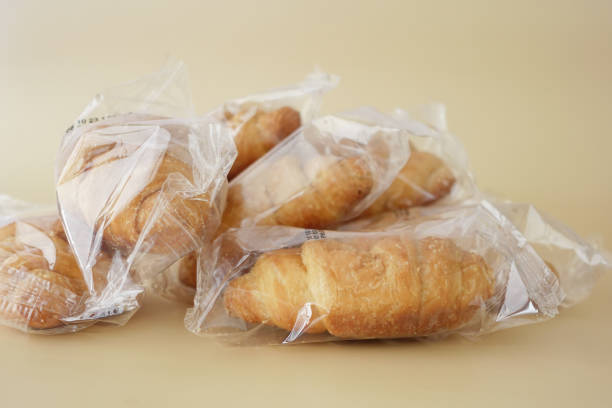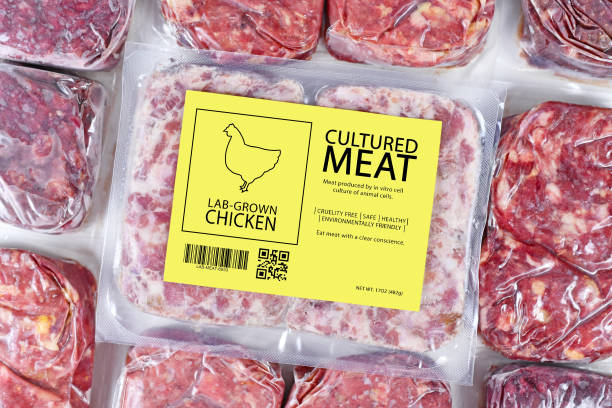Embalagem de bolsa de travesseiro, caracterizado por sua forma única e métodos de vedação eficientes, é popular entre os itens de comida e não alimentar. Se você é uma startup ou um negócio estabelecido, A compreensão da embalagem de bolsas de travesseiro pode elevar sua marca e aprimorar a apresentação do seu produto. Neste guia, Vamos explorar a definição de sacos de travesseiro, suas vantagens, os materiais comumente usados, e como personalizá -los para seus produtos. Pronto para explorar como os sacos de travesseiro podem elevar sua estratégia de embalagem? Continue lendo para descobrir informações e dicas valiosas.
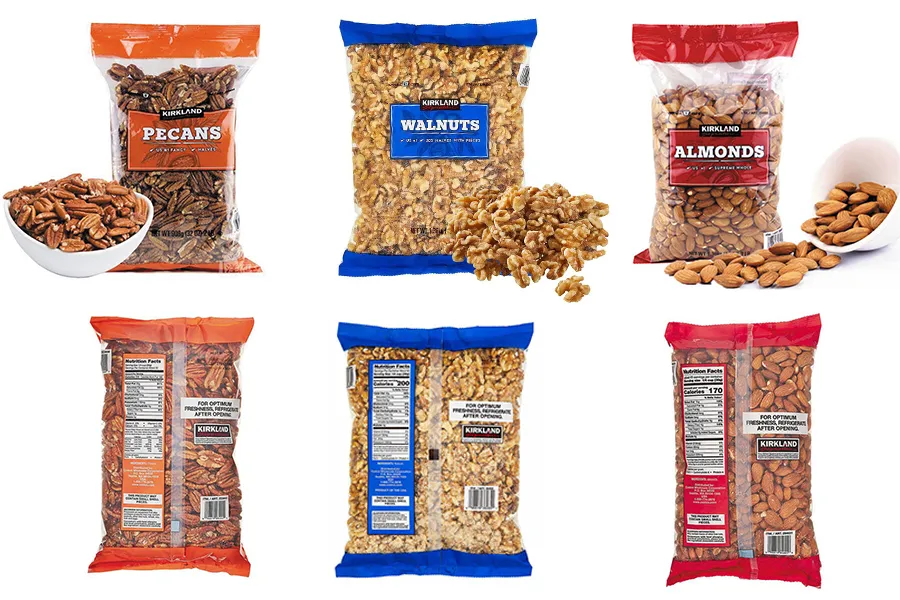
O que é um travesseiro & Embalagem de bolsa de travesseiro?
Uma bolsa de travesseiro é um tipo de embalagem flexível projetada para se parecer com a forma de um travesseiro, com bordas seladas em três lados e um lado aberto para encher. Essas sacolas são comumente feitas de materiais como filmes plásticos, folhas, ou papel. O design os torna altamente versáteis, leve, e fácil de produzir, tornando-os adequados para uma ampla gama de produtos.
Enquanto isso, Embalagem de bolsa de travesseiro refere -se ao processo de criação e encher essas sacolas usando máquinas automatizadas, como a máquina VFFS. É frequentemente usado em indústrias como comida, Cuidados pessoais, e produtos farmacêuticos. Este estilo de embalagem é popular por causa de sua relação custo-benefício, Proteção ao produto, e uso eficiente do espaço durante o transporte e armazenamento.
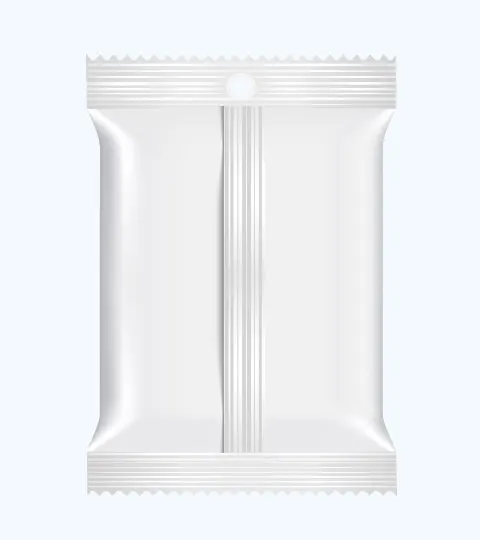
Vantagens da embalagem de travesseiros
Existem muitas vantagens na embalagem de bolsas de travesseiro. Vamos explorar as principais vantagens da escolha da embalagem de travesseiros para o seu negócio.
Custo-benefício
Sacos de travesseiro são feitos de materiais leves e flexíveis, O que os torna uma opção de embalagem mais acessível em comparação com contêineres rígidos. O uso mínimo de materiais reduz os custos de produção, tornando-o uma escolha econômica para as empresas.
Flexibilidade no design de embalagem
Sacos de travesseiro podem ser facilmente personalizados com impressão e marca vibrantes, tornando -os visualmente atraentes. Sacos de travesseiro oferecem uma variedade de possibilidades de design, de marca personalizável a diferentes tamanhos e acabamentos. Então, As empresas podem mostrar detalhes do produto, logotipos, e informações nutricionais para atrair consumidores.
Frescor e Proteção do Produto
Sacos de travesseiro fornecem uma barreira forte contra elementos externos, como umidade, ar, e luz, Garantir a frescura do produto e a vida útil estendida. A vedação de alta qualidade ajuda a manter a integridade do conteúdo.
Materiais usados em embalagens de bolsa de travesseiro
A embalagem de bolsa de travesseiro é versátil, E a escolha dos materiais desempenha um papel crucial em sua eficácia. Aqui está uma olhada em alguns materiais comuns usados:
1. Polietileno (Educação Física)
O polietileno é um dos materiais mais utilizados em embalagens de bolsa de travesseiro. É durável, resistente à umidade, e pode ser facilmente selado, tornando -o ideal para vários produtos, especialmente na indústria de alimentos.
2. Polipropileno (Pp)
O polipropileno oferece excelente clareza e força, tornando -o perfeito para produtos que precisam de visibilidade, como lanches ou cosméticos. Também é leve e resistente à umidade, Melhoria da vida útil do produto.
3. Filmes metálidos
Esses filmes são revestidos com uma fina camada de metal, que fornece excelentes propriedades de barreira contra a umidade, luz, e oxigênio. Os filmes metálicos são frequentemente usados para produtos de alto valor que requerem proteção extra.
4. Materiais Biodegradáveis
À medida que a sustentabilidade se torna mais importante, Materiais biodegradáveis, como filmes à base de plantas, estão ganhando popularidade. Esses materiais oferecem opções ecológicas, enquanto ainda fornecem proteção adequada para os bens embalados.
5. Frustrar
A folha é frequentemente usada para produtos que requerem proteção máxima contra elementos externos. É particularmente eficaz para itens alimentares que precisam manter o frescor por períodos prolongados.
6. Papel
Embora menos comum para sacos de travesseiro, O papel pode ser usado para embalar produtos secos. É biodegradável e pode ser impresso em facilidade, Oferecendo uma opção ecológica que atrai consumidores ambientalmente conscientes.
7. Materiais compostos
Alguns sacos de travesseiros combinam materiais diferentes para aproveitar as propriedades únicas de cada. Por exemplo, Um composto de plástico e papel pode oferecer força, flexibilidade, e impressão.
Aplicações da embalagem de travesseiros
1. Sacos de travesseiro na indústria de alimentos
Sacos de travesseiro são amplamente adotados na indústria de alimentos devido à sua capacidade de preservar a frescura do produto. Abaixo, Exploramos suas aplicações comuns em diferentes categorias.
Embalagem de lanches
Sacos de travesseiro são a escolha para lanches como chips, biscoitos, e pipoca devido ao seu design conveniente e à vedação confiável. Sua estrutura leve facilita o manuseio. Enquanto isso, Seu material de filme robusto faz com que os produtos permaneçam crocantes e frescos por mais tempo. Sacos de travesseiro também podem ser impressos com designs atraentes, tornando -os ideais em prateleiras lotadas.
Produto de laticínios
No setor de laticínios, Sacos de travesseiro são frequentemente usados para porções de queijo único, iogurte, e creme. Seu selo hermético e design flexível protegem produtos lácteos da deterioração e prolonga a vida útil. A embalagem compacta também facilita o transporte ou armazenamento dos consumidores com o mínimo de espaço necessário.
2. Sacos de travesseiros em indústrias não alimentares
Bolsas de travesseiro não são apenas populares na indústria de alimentos, mas também ganharam força em vários setores não alimentares. De produtos de cuidados pessoais a suprimentos médicos essenciais, O produto permanece protegido durante o trânsito e nas prateleiras das lojas.
Produtos de cuidados pessoais
Sacos de travesseiros são cada vez mais usados para empacotar itens de cuidados pessoais, como sachets de shampoo, loções de uso único, e máscaras faciais. Os sacos de travesseiro permitem embalagens econômicas de vários tamanhos de produto, mantendo uma aparência elegante. Seu design fácil de aberto os torna convenientes para os consumidores em movimento, Enquanto o selo hermético faz com que os produtos permaneçam não contaminados e frescos para uso.
Suprimentos médicos
No campo médico, Sacos de travesseiro são comumente usados para embalagens estéreis de itens como seringas, gaze, e luvas descartáveis. O selo seguro garante que suprimentos médicos permanecer livre de contaminação até que sejam abertos, contribuindo para a segurança do paciente. Sacos de travesseiro’ Propriedades leves e duráveis também as tornam ideais para transporte e armazenamento em ambientes de saúde.
O papel do selo de preenchimento de formulário vertical (VFFS) Máquinas
A máquina de vedação de preenchimento de formulário vertical tem muitas vantagens em vários setores. Se você quiser ter um entendimento mais profundo sobre a máquina de vedação de preenchimento vertical, você deve saber a definição e o processo dela. Vamos dar uma olhada para ver.
O que é uma máquina VFFS?
A Selo de preenchimento de formulário vertical (VFFS) máquina é uma solução de embalagem automatizada que se forma, preenchimentos, e sela produtos em sacos de travesseiros verticais. Esta máquina empacota com eficiência uma variedade de produtos, De lanches a itens de cuidados pessoais para criar focas herméticas, fornecendo frescura e proteção.
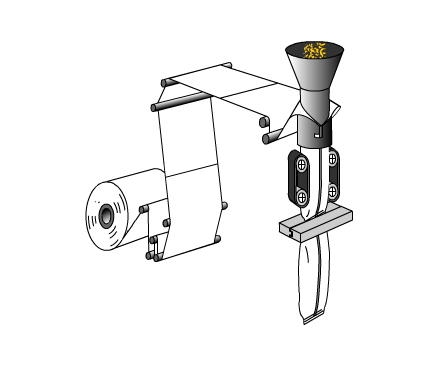
Como as máquinas VFFS criam sacolas de travesseiros?
VFFS (Selo de preenchimento de formulário vertical) As máquinas criam sacolas de travesseiros seguindo estas etapas:
- Desenvolvendo o filme: Um rolo de filme de embalagem é alimentado na máquina.
- Formação: O filme é moldado em um tubo vertical usando um colarinho de formação.
- Enchimento: O produto é dispensado no tubo através de um sistema de enchimento.
- Selagem: A extremidade aberta da bolsa é selada usando calor, Criando um travesseiro selado.
Este processo é eficiente e permite embalagens de alta velocidade de vários produtos.
Benefícios do uso de vffs para embalagem de bolsa de travesseiro
Usando selo de preenchimento de formulário vertical (VFFS) Máquinas para embalagens de bolsa de travesseiro vêm com alguns benefícios fantásticos! Primeiro, essas máquinas são super eficiente, O que significa que eles podem produzir muitas sacolas rapidamente, Aumentando sua saída geral. Essa eficiência não apenas economiza tempo, mas também reduz o desperdício de materiais e os custos de mão -de -obra, Ajudando você a manter suas despesas de embalagem baixas. Mais, As máquinas VFFs são Incrivelmente versátil- Eles podem lidar com uma variedade de produtos, tamanhos, e materiais, tornando -os um ótimo ajuste para diferentes indústrias, Da comida aos cuidados pessoais. Essa flexibilidade garante que você possa atender às suas necessidades de embalagem, mantendo a qualidade de primeira linha!
Como personalizar embalagens de bolsa de travesseiro para o seu produto
Embalagem de sacola de travesseiro personalizada é uma excelente maneira de destacar seu produto nas prateleiras e ressoam com a identidade da sua marca. Aqui estão algumas etapas importantes a serem consideradas ao personalizar suas sacolas de travesseiro:
1. Escolha o material certo
O primeiro passo é selecionar um material que atenda às necessidades do seu produto. Seja uma opção biodegradável para a eco-filidade ou um filme resistente à umidade para o frescor, O material certo pode melhorar o apelo do seu produto.
2. Design gráficos atraentes
Invista em design gráfico profissional para criar embalagens visualmente impressionantes. Enquanto isso ,você deve usar cores, imagens, e fontes que refletem sua marca e atraem seu público -alvo. Quando seu design gráfico é produzido, Não é um final. Lembre -se de que toda a embalagem é consistente para sua marca criar reconhecimento.
3. Inclua informações essenciais
Sua embalagem deve comunicar detalhes importantes como ingredientes, Informações nutricionais, e datas de validade. A rotulagem clara e legível não apenas cumpre os regulamentos, mas também ajuda os clientes a fazer escolhas informadas.
4. Experimente tamanhos e formas
Sacos de travesseiro podem vir em vários tamanhos, Então, escolha um que se encaixe perfeitamente no seu produto. Isso não apenas aprimora a apresentação, mas também reduz o excesso de material de embalagem. Considere formas ou acabamentos únicos para adicionar um toque distinto.
5. Incorporar recursos funcionais
Adicionar recursos como zíperes selvagens ou entalhes de lágrima pode melhorar a usabilidade. Imagine como seus clientes vão interagir com a embalagem com seu produto. E então você deve adaptá -lo para melhorar a experiência deles.
6. Teste e receba feedback
Antes de finalizar seu design, Realizar testes de mercado com protótipos. Você pode obter feedback de clientes em potencial para que a embalagem atenda às suas expectativas e preferências.
Conclusão
A embalagem de travesseiro oferece uma combinação única de versatilidade, relação custo-benefício, e proteção do produto, tornando -o adequado para uma ampla gama de aplicações. As empresas podem entender os vários materiais, as capacidades da vedação de preenchimento de formulário vertical (VFFS) máquinas para otimizar suas soluções de embalagem.
Seja em setores de alimentos ou não alimentares, Personalizando sacos de travesseiro para atender às suas necessidades específicas, incluindo elementos de marca, pode diferenciar seu produto. Para todas as suas soluções de embalagem, considerar Chlbpack, um fornecedor líder e fabricante de máquinas de embalagem. Entre em contato com CHLBPAK Para apoiar sua jornada para embalagens eficazes.
Perguntas frequentes
1. Qual é o formato de um travesseiro?
Uma bolsa de travesseiro normalmente tem três áreas seladas: um no topo, um no fundo, e uma vedação vertical correndo ao longo da parte traseira. Este design é a configuração mais comum. Sacos de travesseiro são produzidos usando uma variedade de materiais, como polietileno de baixa densidade (LDPE), papel resistente, papel de filtro, e até sustentável, reciclável, ou filmes compostáveis. Essa flexibilidade em materiais permite que sacos de travesseiro atendam a uma ampla gama de produtos e indústrias.
2. O que é embalagem de bolsa de travesseiro usada para?
As embalagens de bolsas de travesseiro são usadas principalmente para proteger os produtos contra danos à umidade. Eles absorvem vapor de umidade, odores, e até gases, tornando -os ideais para preservar a frescura e a qualidade dos itens sensíveis.
3. Quais são as desvantagens das embalagens de travesseiros aéreos?
Enquanto a embalagem de travesseiro de ar oferece excelente amortecimento para produtos, Existem algumas desvantagens. O material usado é geralmente fino e cheio de ar, o que significa que é necessário um cuidado extra ao embalagem de itens com bordas afiadas para evitar perfurações. Adicionalmente, Almofadas de ar tendem a ser mais caros que o envoltório convencional de bolhas, Embora sua qualidade protetora justifique o custo mais alto em muitos casos.


